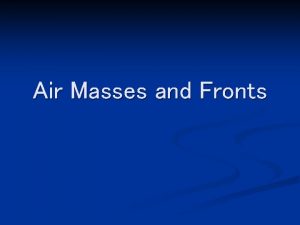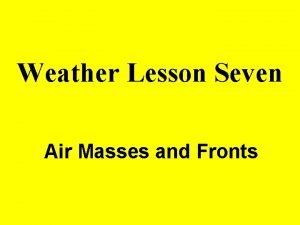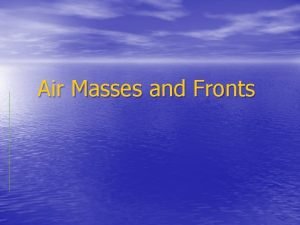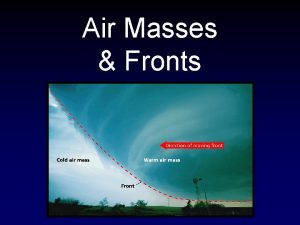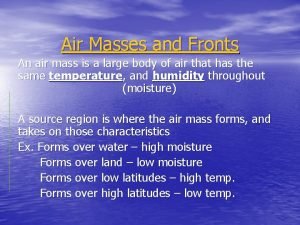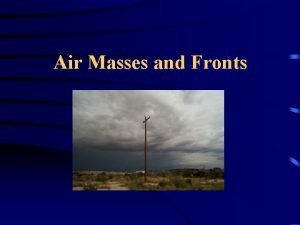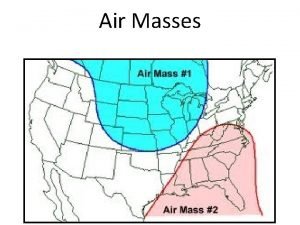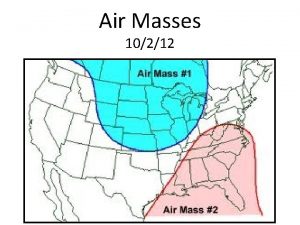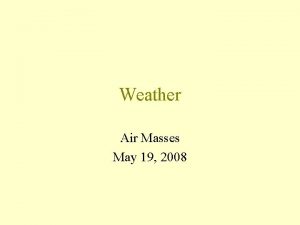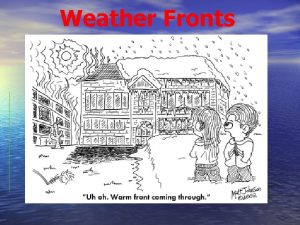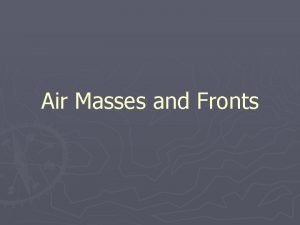Weather changes as air masses move Air masses









- Slides: 9

Weather changes as air masses move

Air masses are large bodies of air • Air mass- a large volume of air in which temperature and humidity are nearly the same in different locations at the same altitude • Air masses take on the characteristics of the Earth below them and takes them to new locations

Characteristics of an Air Mass • Air mass names contain two words – First describes the area where the air mass formed • Continental-forms over land, dry • Marine- forms over water, moist – Second describes how close to the equator the air mass formed • Tropical-near the equator, warm land water • Polar- far from the equator, cold land water

Movement of an Air Mass • Air masses: – Travel away from the area where they form – Move west to east along the jet stream – Fast moving air masses do not take on the characteristics of the land below

Weather changes where air masses meet • Front- boundary between air masses • Cold Front – Move into regions quickly – Push warm air up, water vapor condenses forming clouds – Produces precipitation – Cooler air arrives

• Warm Front – Move slowly – Rises above cold front forming clouds – Produces many hours or rain or snow – Leaves warmer air behind it

• Stationary Front – Occurs where air masses first meet or when cold or warm fronts stop moving – Air moves sideways or upwards along the front – Produces cloud cover for days – Becomes either a warm or cold front when one air mass advances

High Pressure Systems • Formed when an air moves all the way around a high pressure system • Large and change slowly • Generally brings clear skies and calm air • Can form air masses (warm or cold)

Low Pressure Systems • Large weather system that surrounds a center of low pressure • Air rises quickly producing stormy weather • Usually from along the boundary between a warm and cold front
 Continental polar canadian air masses generally move
Continental polar canadian air masses generally move Air masses & frontswhat is an air mass?
Air masses & frontswhat is an air mass? What are the seven
What are the seven Air masses & frontswhat is an air mass?
Air masses & frontswhat is an air mass? Two cold air masses converge on a warm air mass
Two cold air masses converge on a warm air mass A swirling center of low air pressure is called
A swirling center of low air pressure is called Maritime polar
Maritime polar Air masses & frontswhat is an air mass?
Air masses & frontswhat is an air mass? Air masses & frontswhat is an air mass?
Air masses & frontswhat is an air mass? Lateral thinking riddle
Lateral thinking riddle

